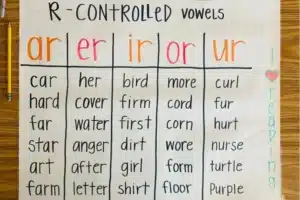
Shadow Teaching is essential to a child’s success in a mainstream classroom when they are a Student with a Special Educational need or disability. A pillar of shadow teaching is a trained educator who is working with a student on a one-to-one basis to ensure their academic, emotional, social, and developmental goals are being achieved. Shadow Teaching allows the student to join in on daily learning, social independence with peers, and develop life skills with support and confidence. Working collaboratively with the class teacher and school leadership, along with specialised services and the family, the shadow teacher assists in establishing a positive learning environment that accommodates the learner.
What do Shadow Teachers do?
Shadow teachers provide individualized support to their students – particularly students who may have learning differences or special needs – in the general education school setting. Their role helps fill learning gaps, supports behavior, and promotes independence.
To download the brochure of the STT Course, Click Here!
For more details on the STT Course, Call/WhatsApp at +919321024137 / +919869866277
Here’s how they make a difference:
Support Learning in the Classroom
- Help the student understand lessons by breaking tasks into smaller, manageable parts.
- Implement a lot of visual graphics that help hold on to the child’s attention for a longer while.
- Have a proper recap of the topic so that the child grasps the concepts totally.
- Emphasize classroom instructions gently, ensuring the child is comfortable with the learning pace.
Promote the child to be fully involved and participate.
- Encourage the student to use their valid points in any group discussions and activities.
- Help the student express themselves correctly and respond to peers with confidence.
Focus on the child’s emotional and social well-being.
- Help the child cope with his anxiety by constantly being there for him.
- Help the student follow class routines and understand acceptable behavior.
- Build trust and consistency, so the child feels calm and secure in a busy classroom.
Collaborate productively with other professionals
- Work closely with the class teacher to be well-prepared to adapt or modify lessons to suit the child’s needs
- Follow a regular feedback schedule, updating the child’s parents about his progress and the achievement of milestones.
- Collaborate with the therapists, counsellors to provide the child with personalized plans to promote all his developmental domains.
Making Learning Fun and Easy
Shadow teachers bring learning to life using simple yet effective strategies:
- Make learning joyous by incorporating games and fun activities.
- Use interactive role-play activities or a drama activity to help the child relate well to the topic being taught.
- Encourage the child to give his opinion to boost his self-confidence.
- Celebrate the child’s small wins, making him feel proud, which will help him strive harder for better results.
With the shadow teacher on board, the child’s learning journey becomes stress-free and a more enjoyable one, helping the child develop competencies that will help him lead an independent life with dignity and respect.

Source: freepik
Why do Parents Hire Shadow Teachers?
As the mainstream classroom will always follow standard teaching methods that are followed by the average learner, it is important to find a suitable way to cater to the needs of the Special Children without confining them to a separate classroom. In such a scenario, the shadow teacher becomes a big support to assist and guide the child to understand and grasp topics thoroughly.
Parents want their child not just to thrive academically but to be competent socially and emotionally to form meaningful relationships with their peers, which is possible with the help of a shadow teacher.
Here are key reasons why shadow teachers are sought after:
One-on-one attention
- Mainstream Classrooms maintain the pace of average learners, due to which special children lag behind
- A Shadow Teacher understands the child’s pace and accordingly guides them, supporting them by providing individualized attention when the child is in the classroom itself.
Fill in the Learning Gaps
- Children with special needs possess poor processing skills, due to which the teaching methods followed for a mainstream classroom may leave them feeling confused and lost.
- Shadow teachers modify the lessons while the child is in the classroom, enabling him to attain his learning goals.
Emotional Stability
- To have a known adult around the child helps them feel comfortable and secure, reducing feelings of anxiety.
- Shadow teachers offer calm guidance during stressful or confusing moments.
Improved Social Interaction
- Many children struggle with peer relationships or communication.
- A shadow teacher gradually encourages children to play together with the help of cooperative games, enabling them to work together and develop strong social interaction skills.
Appropriate Behaviour
- Students have to be guided to take charge of their emotions, enabling them to feel secure and focus better.
- Shadow Teachers know the trigger points of the students well, and they train students to handle their impulses effectively.
Consistency Between Home and School
- Parents often collaborate with shadow teachers to ensure shared goals and consistent strategies.
- This coordination strengthens learning and behavior patterns across both environments.
Gradual Independence
- The ultimate goal for many parents is for their child to function independently.
- Shadow teachers meticulously encourage students to perform their tasks independently.
Shadow Teachers are viewed as a strong support system for parents who know the child’s strengths and weaknesses well to support them in their everyday learning journey. They not only promote the child’s learning skills but also help them manage their impulses, helping them form meaningful bonds, fostering their social interaction skills.

Qualifications Required to be a Shadow Teacher
To be a shadow teacher, one needs a combination of formal education and personal attributes that facilitate the learning and emotional requirements of children. As a job that entails close cooperation with children who are experiencing learning difficulties or special needs, adequate knowledge and skill acquisition are crucial.
Educational Qualifications
- A minimum qualification of 10+2 is generally required.
- A degree in education, psychology, or child development is preferred but not mandatory.
- Most importantly, pursuing a Shadow Teacher Training Course equips individuals with the skills needed to support children effectively.
Fundamental Skills and attributes
- To have a patient and empathetic mindset to modify the lesson to suit the child’s learning style.
- Convincing communication skills to work positively with teachers, therapists, and specialists for working towards the child’s holistic progress.
- Strong observation skills to note and assess the child’s progress.
Importance of the Shadow Teacher Training Course
To become an effective shadow teacher, one needs to undergo a Shadow Teacher Training Course. The course is designed to deliver practical techniques and theoretical ideas to aid children with diverse needs in inclusive classrooms.
Vidhyanidhi Education Society (Govt. Regd.) has a highly organized Shadow Teacher Training Course that equips individuals for actual classroom scenarios.
Shadow Teacher Training Course Syllabus Includes:
- Understanding different types of learning disabilities
- Behavior management techniques
- Individualized teaching strategies
- Child psychology and development
- Classroom observation and reporting methods
- Effective communication with parents and school staff
- Techniques to promote inclusion and independence
The Shadow Teacher Training Course by Vidhyanidhi Education Society (Govt. Regd.) ensures that aspiring shadow teachers are well-prepared to support children in their educational journey with care, confidence, and professionalism.
“Advance your teaching journey with Vidhyanidhi Education Society’s STT Course today!”
To download the brochure of the STT Course, Click Here!
For more details on the STT Course, Call/WhatsApp at +919321024137 / +919869866277
What is Shadow Teaching?
FAQs
Who Pays for a Shadow Teacher?
Shadow teachers are usually paid by the kids’ parents, as they provide personalized support not covered by the school staff.
What is the Salary of a Shadow Teacher?
The salary of a shadow teacher varies based on experience, location, and hours worked, and is usually arranged privately with parents.
What is a Shadow Teacher Female?
A female shadow teacher is a woman trained to support a child with learning needs in class; Vidhyanidhi Education Society offers such training.



